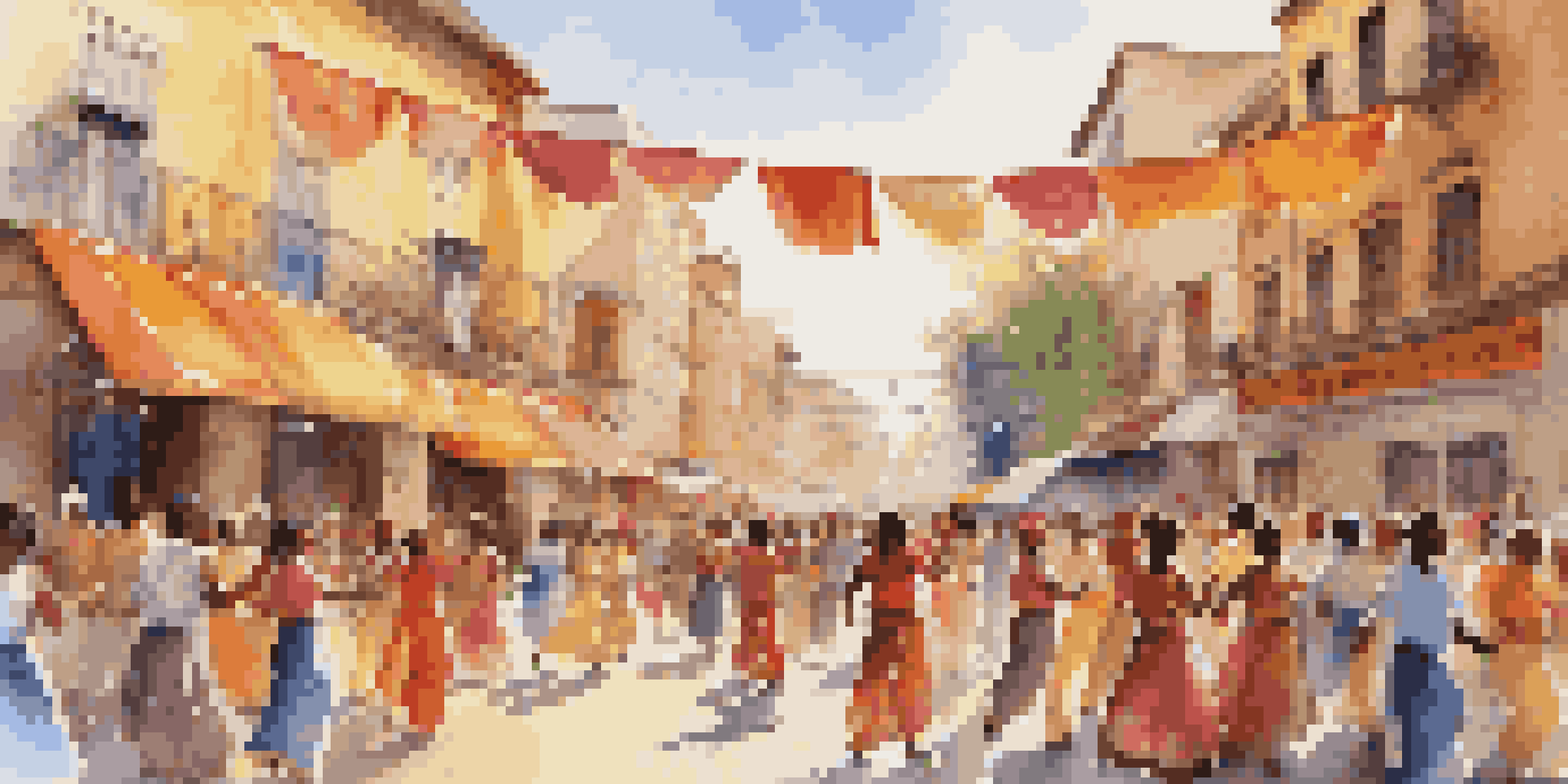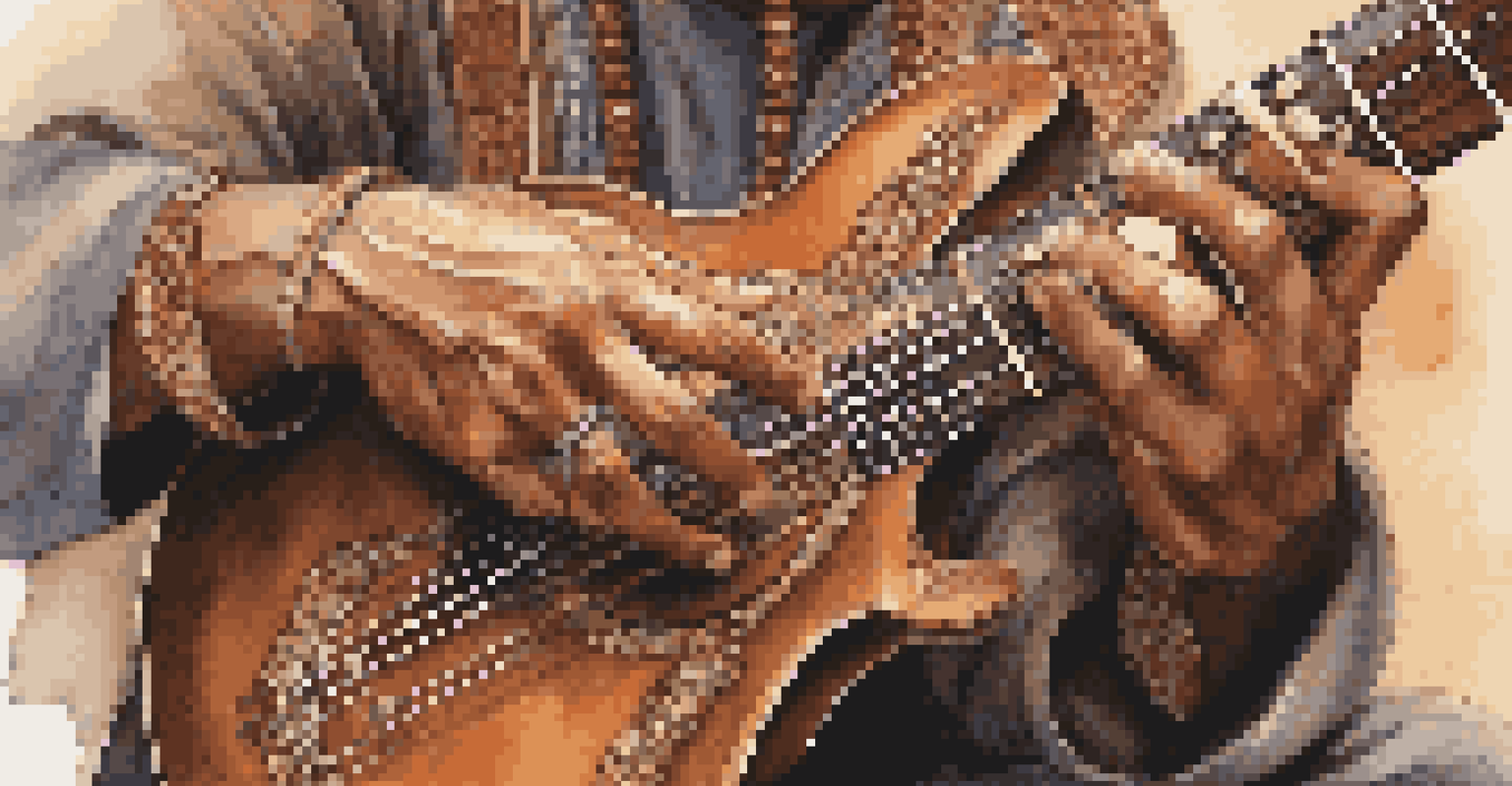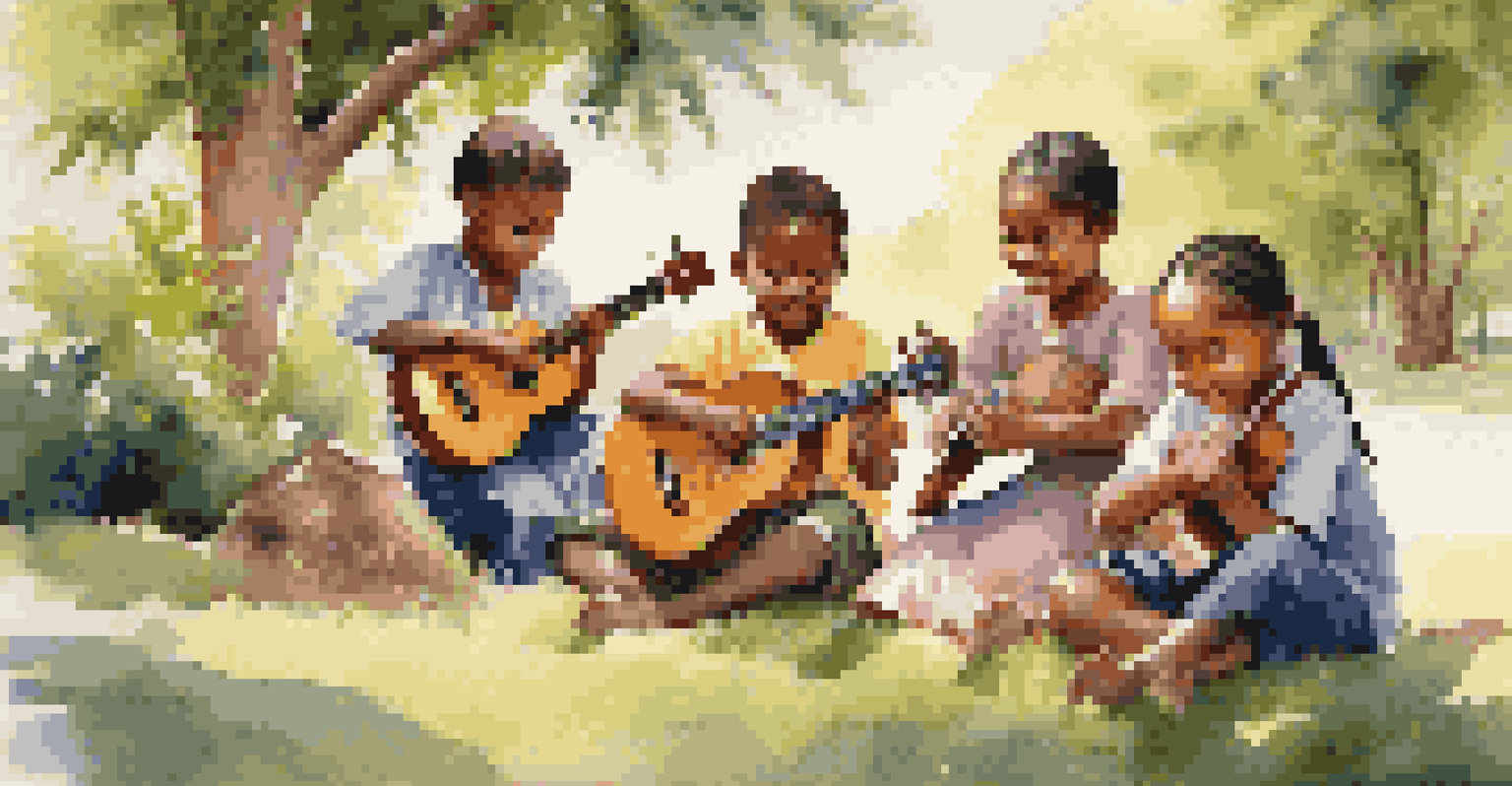Cultural Identity Reflected Through Regional Music Styles

Understanding Cultural Identity and Its Importance
Cultural identity is the sense of belonging to a particular group, shaped by shared traditions, values, and experiences. It's like a colorful tapestry, woven from the threads of history, language, and customs that define a community. Understanding cultural identity is crucial as it fosters a sense of pride and connection among individuals.
Music can change the world because it can change people.
When we delve into cultural identity, we often uncover how different groups express themselves through various forms of art, with music being one of the most powerful. Music has the ability to convey emotions, tell stories, and reflect the unique experiences of a culture. This rich expression not only entertains but also educates listeners about diverse backgrounds.
Regional music styles serve as a voice for the people, encapsulating their joys, struggles, and aspirations. From the rhythm of African drumming to the soulful tunes of American blues, these musical forms carry the essence of the culture they represent. By exploring these styles, we gain insight into the values and histories that shape individual and collective identities.
The Role of Folk Music in Cultural Expression
Folk music is often seen as the heartbeat of a community, passed down through generations. This genre reflects the everyday lives, stories, and struggles of the people, often using simple melodies and lyrics to convey deep emotions. For instance, the traditional ballads of the Scottish Highlands tell tales of love, loss, and heroism, connecting listeners to their heritage.

The authenticity of folk music lies in its ability to resonate with listeners on a personal level. It invites participation, encouraging communities to come together for celebrations and rituals. Whether it's a lively jig or a somber dirge, these musical forms become a shared experience, reinforcing bonds within the community.
Cultural Identity Shapes Communities
Cultural identity fosters pride and connection among individuals, acting as a tapestry woven from shared traditions and experiences.
In many ways, folk music acts as a historical archive, preserving the language and customs of a culture. As younger generations learn these songs, they not only connect with their roots but also keep the tradition alive. This ongoing exchange ensures that cultural identity remains vibrant and relevant in an ever-changing world.
Rhythm and Dance: A Reflection of Regional Heritage
Rhythm and dance are integral components of many regional music styles, acting as a dynamic expression of cultural identity. Take, for example, the vibrant salsa music of Cuba, which combines African rhythms with Spanish melodies. The accompanying dance is not just a form of entertainment; it's a celebration of life and community.
Folk music is the music of the people, and it reflects the stories of a culture's history.
Through rhythm and dance, cultural stories come alive, allowing individuals to share their heritage in an engaging way. In Brazil, samba is more than just a dance; it embodies the spirit of the Carnival, drawing people together to celebrate their shared identity. This connection between music, movement, and culture creates an atmosphere of unity and joy.
Furthermore, these rhythmic expressions often serve as a means of resistance and resilience. Many regional dances emerged from historical struggles, symbolizing hope and persistence. By participating in these art forms, communities not only honor their past but also assert their identity in the present.
Modern Influences on Traditional Music Styles
The fusion of traditional music with modern influences has led to the emergence of new genres, reflecting the evolving nature of cultural identity. Artists today are blending traditional sounds with contemporary genres like hip-hop, electronic, and pop, creating a rich tapestry of musical expression. For instance, Indian artists incorporating electronic beats into classical music are reaching wider audiences while honoring their heritage.
This blending often sparks conversations about cultural authenticity and appropriation. As traditional music intersects with global trends, it's essential to respect the origins and significance of these sounds. By doing so, artists can create works that celebrate their heritage while engaging with a diverse audience.
Folk Music Preserves Heritage
Folk music serves as a historical archive, connecting communities through shared stories and encouraging the transmission of cultural traditions.
Moreover, these modern interpretations can breathe new life into regional music styles, inviting younger generations to connect with their roots. The collaboration between old and new fosters a sense of pride in cultural identity, encouraging individuals to explore and celebrate their heritage in fresh ways.
Regional Instruments: Symbols of Cultural Identity
Instruments play a vital role in defining regional music styles, often serving as symbols of cultural identity. Take the sitar in Indian classical music or the bagpipes in Scottish folk music; each instrument carries its own story and significance. The distinct sounds produced by these instruments evoke emotions tied to cultural experiences and memories.
Learning to play a regional instrument can deepen one’s connection to their heritage. For many, the process of mastering an instrument like the ukulele in Hawaiian music or the djembe in West African rhythms becomes a personal journey of exploration. This connection fosters a sense of belonging and pride in one’s cultural roots.
Furthermore, regional instruments often represent community and tradition, linking generations together. They are frequently used in social gatherings, celebrations, and rituals, reinforcing bonds among individuals. Through these instruments, cultural identity is not only preserved but also celebrated, ensuring that it continues to resonate through time.
The Impact of Globalization on Regional Music Styles
Globalization has significantly influenced regional music styles, leading to both challenges and opportunities for cultural identity. As music becomes more accessible through technology, traditional sounds are often blended with global trends, creating new genres. While this fusion can promote cultural exchange, it may also dilute the uniqueness of regional music.
On one hand, globalization offers artists the chance to reach broader audiences and gain recognition for their talents. For example, K-pop has taken the world by storm, showcasing Korean culture and music on an international stage. This exposure can lead to a greater appreciation of diverse cultures and the music that represents them.
Globalization Influences Music Styles
Globalization presents both opportunities and challenges for regional music, blending traditional sounds with modern trends while risking cultural homogenization.
On the other hand, there is a risk of cultural homogenization, where unique regional sounds are overshadowed by mainstream trends. As artists navigate this landscape, it's essential to strike a balance between embracing modern influences while staying true to their roots. This journey of adaptation can either strengthen or challenge cultural identity, depending on how it's approached.
Celebrating Diversity Through Regional Music Festivals
Music festivals celebrating regional styles serve as a vibrant showcase of cultural identity. Events like the New Orleans Jazz & Heritage Festival or the Edinburgh Festival Fringe bring together artists and audiences from diverse backgrounds. These gatherings provide a platform for musicians to share their heritage while fostering a sense of community among attendees.
Festivals not only highlight the richness of regional music but also promote cultural exchange and understanding. Attendees have the opportunity to experience different traditions, learn about their origins, and appreciate the stories behind the music. This immersive experience allows individuals to connect with cultures beyond their own, broadening their perspectives.

Moreover, music festivals can have a significant economic impact on local communities, drawing tourism and supporting local artists. By celebrating regional music, these events contribute to the preservation of cultural identity while creating a space for dialogue and connection among diverse audiences.